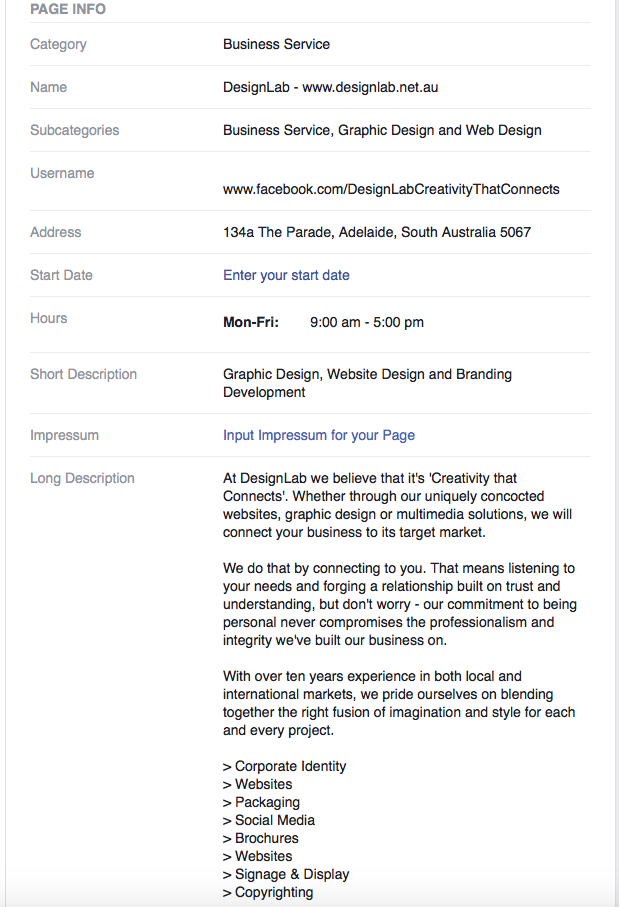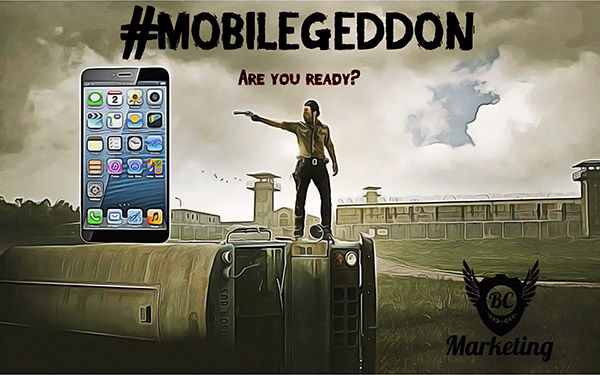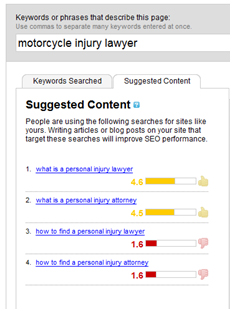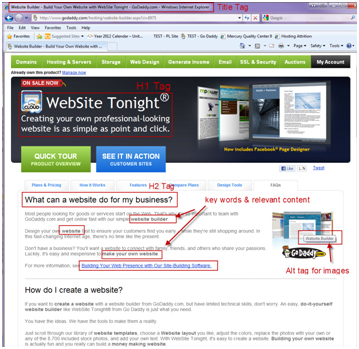How do you create a high converting landing page that drives maximum conversion rates in Google?
What’s a landing page?
A landing page is what your customers view after clicking through Google’s search engine.
These web pages are designed for one purpose: to convert a visitor.
Whether that conversion goal is to get people to either buy a product, or to book an appointment, it can be done by strategically arranging elements on your landing page.
What’s the difference between a landing page and all the other pages on my website?
Most businesses have an “About us” page, a variation of a “What we offer” or “Services” page, and a web page dedicated to your customers. These pages, help make your website — the purpose of which is to teach your customers more about you’re business.
Landing pages work different. They’re designed specifically to convert visitors into leads, which means they need to be persuasive than any of the other pages on your website.
The people who land on these pages don’t want to learn your vision, or meet your team. They’re there because they’ve been enticed by your promotion and want to see what you’re offering.
So how do we go about creating a landing page layout that will boost the chances your visitors convert?
The best landing page layout, above the fold:
If you want to make a good impression, place your important elements above the fold. They will help you quickly convey the benefit of your offer, and show prospects what they need to do to claim it.
Your logo
If you don’t include your logo somewhere on the top of your landing page, your’e visitors may wonder who are you. It’s important to practice consistent branding, so that customers know they haven’t been redirected to some spammy site.
Like most sites, this company has placed their logo in the upper-left corner

You need to do the same, because the upper left corner is where most of your customers will look to find you.
No navigation
A landing page is a little bit like a well-designed trap. Your customers should be able to get in, but not leave, unless they buy.
That means no navigation menu across the top for visitors to escape with. The only three ways they should be able to get off your landing page is:
- By buying
- Or by hitting the “x” in the corner of their screen to exit the browser window
- Or by clicking the back button
A strong call to action
Your call to action should be the first thing your customers read when your page loads. Use big, bold text to draw attention, and communicate your unique selling proposition in a way that explains how it will benefit them.
Here’s is a great example from Five Four Club:

Their unique selling proposition is that they deliver your clothing to your doorstep. So how does that benefit the customer?
They don’t have to go actually go shopping.
When thinking of your headline, think about the problem your customers face, and communicate how your business is going to solve it for them.
Without a great call-to-action, your landing page is could fail.
Remember, the entire purpose of a landing page is to get your customers to take action, and this is how it happens. Your visitors have to click a button to convert.
If you have a contact form, position your Call To Action button just below.
Engaging media
More and more these days we process the world visually through gestures and facial expressions. We’ve evolved to prefer images to text when processing information.
The quickest and most efficient way to get information across is to show it.
A Hero shot helps your customers imagine their lives after they have bought your product; infographics like charts and graphs help them better conceptualise the information; videos and case studies help them understand your product in a easy way.

A detailed form
You may or may not require your customrers to hand over information about themselves in exchange for what you’re business is offering.
If so, you will need a lead capture form, like the one below from Salesforce:

These contain a combination of fields, allowing customers to submit more information about themselves, but forces them to at least give you the bare minimum you need.
Include a lot of required fields and you’ll get more information from your customers who may convert. More information allows you to deliver marketing messages, on top of giving you a greater insight to your target audience.
But, sometimes the more you ask, the likely your customers are to fill out the form properly. They may not have the time to finish a form that is too long.
On the flip side, the less you ask, the more likely it is your customers may finish filling out the form, which means the more leads you may generate. But, they won’t be as much as the leads you generate from a longer form.
Benefit-oriented copy
“What’s in it for me?” That’s what your customers want to know when they land on your page. Don’t waste time getting to the point by fluffing around. The more direct, the better.
Something else to keep in mind when writing your landing page copy is that people don’t like to read block text. Big text blocks were the last thing people want to look at.
Make it simple and small.
Minimal footer
There should only be a couple of ways off your landing page: the back button, the little “x” in the corner of the browser window, and your call to action button.
When it comes to creating a footer, it shouldn’t include a sitemap, or links to your social media sites. The only thing you should have in your footer is:
- Terms & conditions
- Privacy information
- Copyright information
Here’s an example of a footer.

Remember that any link that isn’t your CTA button simply acts as another way for your customers to escape your page without buying.
Contact information
If your landing page has done the job, your customers will be able to decide whether or not to buy your offer.
But it’s not always easy to anticipate all your customers questions. Sometimes they want to talk to a person, and a contact information lets them do it.
Add yours to your footer, or even to your header.































1. Send social signs
There are lot of digital marketers who complain about low volume of incoming traffic from social platforms in relation to the efforts spent on those platform, but a silver lining has finally been added to the social big picture.
Just as backlinks act as votes for your site, raising your domain authority and rankings, so too does the popularity of content you share on social media.
Late in 2014, Google loosened its grip and took the first steps toward allowing non-Google social media platforms to be featured on its search engine results pages (SERPs). Social media platforms other than Google+ made their entry into Google’s Knowledge Graph.
With the removal of Google authorship, as well, from search result snippets, you can expect social signals from popular platforms to gain in importance in the years ahead.
2. Love the mobile
We all know the coming of age of the mobile Web, it’s been creeping upon us. With the share of smartphones at 80% of the US market, predictions are coming true. Further, mobile Internet activity now stands at over 40% of all Internet traffic and only half that are desktop computers.
Recognising the changes in browsing patterns, Google took the step of tagging sites on its SERPs as “mobile-friendly” as a tip off to searchers. The click rates and engagement for sites tagged specifically as mobile friendly are higher than others.
So hurry up and switch to responsive design (if you haven’t already). Search the site markers that Google uses to confer a tag on sites and implement these changes on your site ASAP, which include the following:
Take Google’s Mobile-Friendly Test and make sure your site passes.
3. Don’t abuse guest blogging
As content gains acceptance as a road to earning you links and growing authority, there was a mad rush between 2012 and 2013 toward guest-blogging simply for the sake of links, no matter how irrelevant or unimportant the referring site. Thousands of low-quality websites and blogs exploded, soliciting guest posts and offering backlinks in return.
Not surprisingly, that extent of guest posting sites did not go unnoticed, and in early 2014 Google specifically highlighted guest-blogging as a strongly undesirable method of earning SEO brownies.
In the words of Google: “If you’re using guest blogging as a way to gain links in 2014, you should probably stop.”
But that does not mean you need to close the doors on guest blogging in 2016; it just means that resorting to spammy guest posts on spammy sites is a bad idea.
To avoid Google’s wrath, resolve to put quality over quantity. Aim to acquire high-quality links from respected and well-read websites rather than anyone who agrees to publish your content for the sakes of backlinks.
Doing so is easier said than done. A guest post on a high-quality site comes with two requisites:
4. Move to HTTPS
HTTPS (HTTP Secure) is technology for transferring data between your site and the Web servers with an additional layer of encryption called SSL (Secure Socket Layer) to make your data transfer very secure.
With the recent hacking of large-scale data breaches, including the famous Sony hack, security has been a priority of most digital marketers. Gone are days just e-commerce retailers, financial websites and the likes having to spend time and building airtight websites with SSL encryption.
In a move for safer browsing experience for all users, in August 2014 Google announced it would be using HTTPS as a definite ranking signal.
Keeping the ever-worsening Web security situation in mind, combined with Google’s announcement regarding HTTPS as a ranking signal, it is definitely worth your while to invest in an SSL certificate for your site. It’s even more important if your site needs login authentication or handles sensitive user data.
(However, bear in mind that SEO-related things can go wrong when migrating your HTTP site to HTTPS, so seek an expert agency to help you out.)
5. Focus on contextual search
Semantic search shot into focus with Hummingbird in 2013. SEOs of all kinds rushed to optimise their content to not just keywords but also their synonyms, product- and brand-related phrases, different content formats, and so on.
In 2014 processing capabilities of Google bots became more refined. A smart SEO strategy would approach keyword research from the perspective of search intent. So now, you must think like your user and come up with as many combinations as possible for queries related to your brand.
Instead of using single keywords to build authority, consider conversational queries that use natural language structures. If you do have to focus on keywords, use universal transactional words like sale, buy, cheap, discount, etc. to build probable search queries for your products or brands.
“Content that links back to your site does not have to be in your face with exact or partial match, or even branded keywords as your anchor text,” says Vaibhav Kakkar, co-founder of RankWatch, which offers backlink and on-site SEO analysis in addition to monitoring rankings.
Vaibhav concludes from analysis on its links to rankings interaction data that even a mere reference with no link back to your site adds to your ranking potential, just as long as your brand is mentioned in relevant context.
Even if your products are alluded to along with those of your competitors, search engines pick up on the fact that your brand belongs to the same product category as the others. If any of the brands that share space with yours happen to have high online authority, some of that authority rubs off on you via association.
Google always continues to keep SEO experts on their toes. The good news is that SEO is now more about how useful your site is to the end user than how smart you are at outflanking Google’s ranking systems.
The challenge is that it’s an uphill battle to be truly useful to today’s informed and savvy web searcher.
After years of umming and arring about social media’s relative importance to search rankings, Google finally acknowledged its place as a valuable visibility factor, albeit in a subtle way.